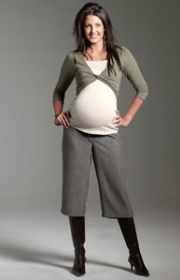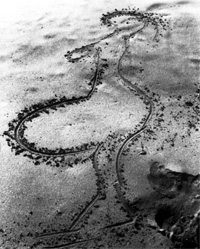First stage: Early labor
Once you start experiencing contractions at regular intervals and your cervix begins to dilate and efface (thinning), then we can say that labor has started and that you are now experiencing the early stages of labor. In most cases it is extremely difficult to distinguish between Braxton Hicks and real labor until the contractions become regular and your cervix begins to dilate. Contractions will start off fairly weakly and gradually become stronger and stronger and closer together as your labor progresses. It is very difficult to try and give you some sort of guidelines for the contractions as every pregnancy is different. However, most women will experience contractions which start between 10-15 minutes apart and lasting anywhere from 20-30 seconds at a time. They will probably end up being about 2 minutes apart as you get closer to the end. Just because the early contractions don’t last as long and are further apart doesn’t mean that they will be less painful. It is not uncommon for the early contractions to be painful. Although they may be painful they will not require any special attention this early, and you will probably be able to walk around, take a bath or do pretty much any of the normal things you would normally do. Try and get as much rest as you can though, because in a few hours you are going to need all the strength and energy you have. You may also begin to notice an increase in vaginal discharge, or even the blood tinged discharge which you may have heard being referred to as the “bloody show” . This is all normal, but be sure to call your midwife or healthcare provider should you notice more than just a bloody tinge to the discharge. How long early labor lasts is difficult to say – it could be 2 hours it could be more, it is different for each labor. What we do know is that it depends on just how ripe your cervix was at the onset of labor and the frequency and strength of your early contractions. Early labor generally ends when your cervix has reached 3-4cm dilated.Active labor
This is when everything really starts to get going. Once your cervix dilates more than 4 cm then you are actively in labor. Your contractions will come more frequently, become stronger and stronger and your cervix will begin to dilate faster. At this stage you probably won’t be walking around too much, and you may not be able to talk through the contractions either. There is no doubt that these contractions are much more painful than those you experienced in the early stage, and they will also be lasting much longer, perhaps lasting for 60 seconds every 5 minutes. If this has been going on for more than an hour, then it is time that you call your midwife or go to the hospital if you haven’t already done so. Toward the end of active labor your baby may begin to descend if he/she hasn’t already started doing so. As with the early stage of labor it is almost impossible to give an exact time frame for how long the active stage lasts, but if you were having an average normal labor then you could estimate that the active stage would last for about 6 hours, if this was your first pregnancy. This of course assumes that you have not been given any medication which may help speed up the labor process.What are the best ways to stay relaxed?
When you first arrive at the hospital or birthing center you may want to be able to move around and walk about to help keep you relaxed. You will have many hours where you can’t do anything other than lie on your bed at the hospital, so be sure that you take advantage of having the freedom to walk about while you can. Other good techniques may be rocking in a rocking chair or sitting up in your bed or on a chair. If you can try and take a warm shower or even better, a warm bath. Breathing exercises, relaxation techniques, massage and lots of gentle encouragement are lifesavers too.Transition Stage
This is generally when your cervix is at 8-10cm dilated. This is often the most intense part of the whole labor experience with your contractions at their strongest and most frequent, around 2 minutes apart. By the end of this stage your baby would have descended into the birth canal and be ready for delivery. This is a time when everything seems to start happening at once. You may feel nauseated and like you need to vomit, and you may also start to feel like you need to empty your bowels – along with lots of bloody discharge. This transition stage can take anywhere from a few minutes to a few hours again, although it is usually fairly quick.Stages Of Labor And Childbirth



